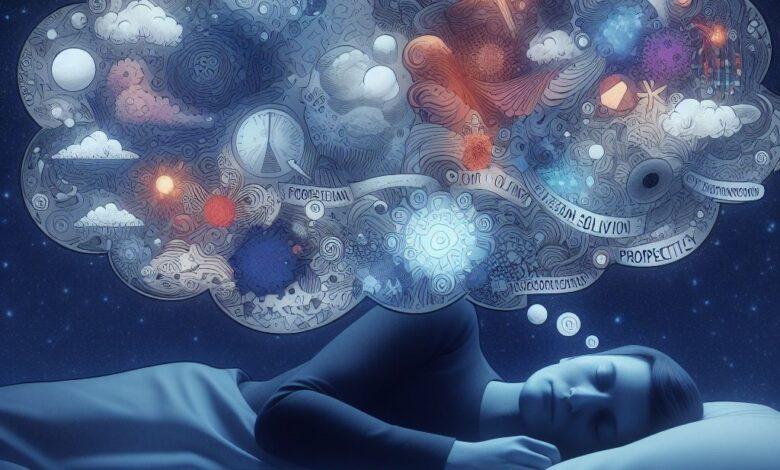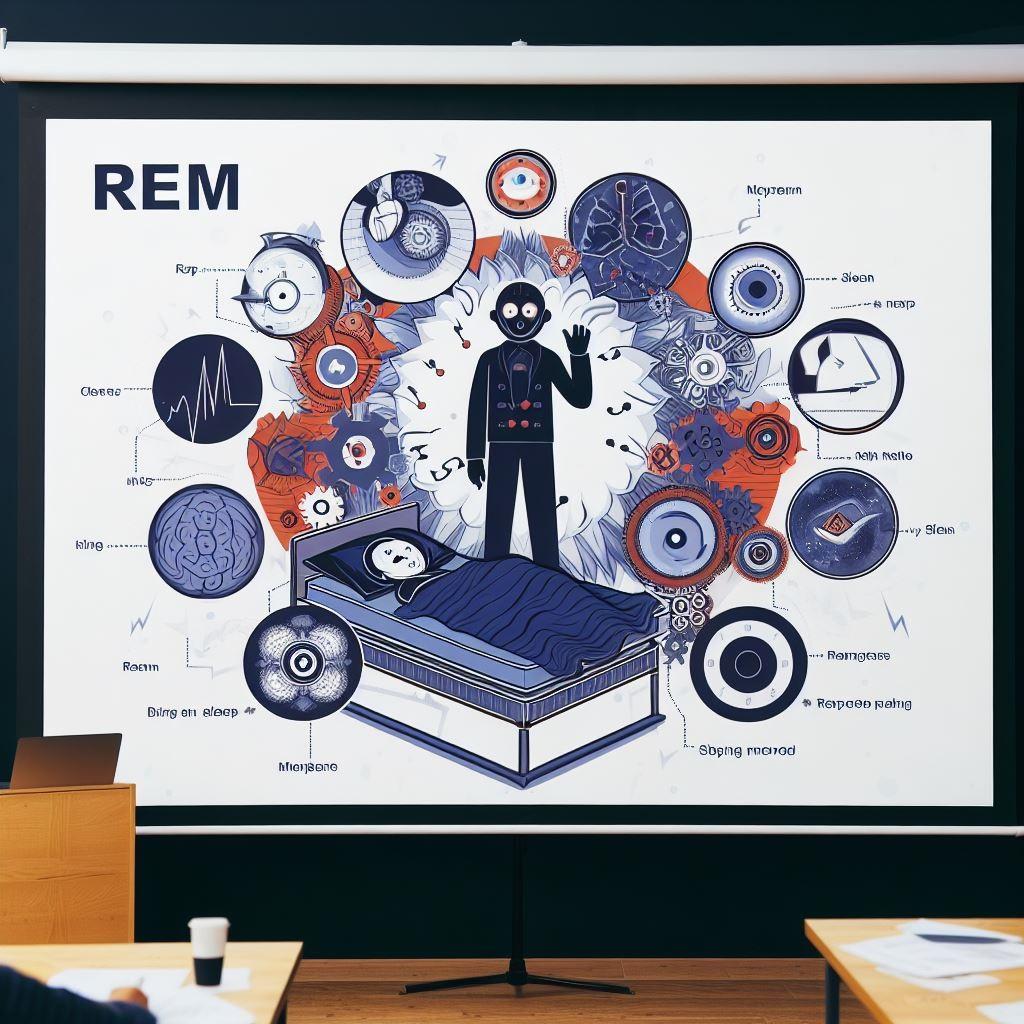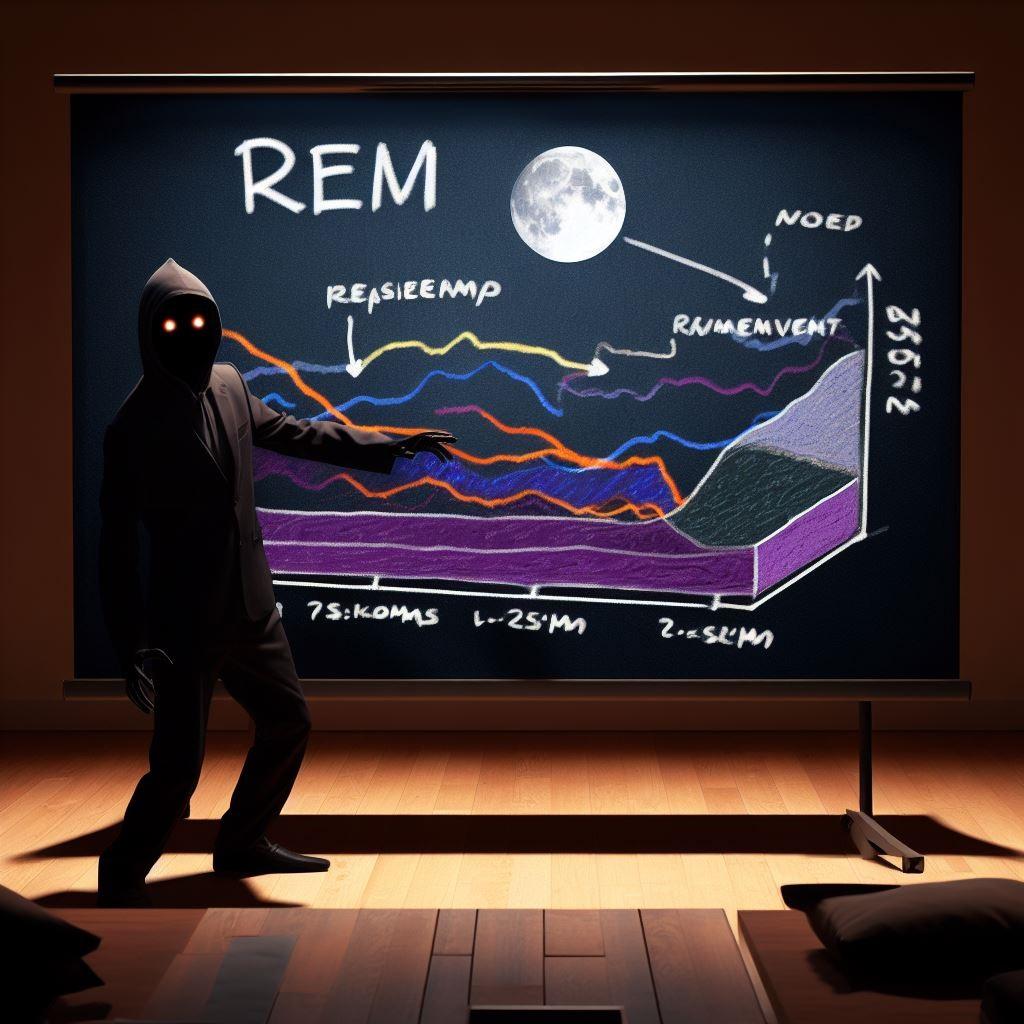Why We Dream ? A Deep Dive into the Night’s Mysteries

Ever found yourself enveloped in the enchanting world of dreams, where reality intertwines with fantasy, leading you on a rollercoaster of emotions, scenarios, and questions? The realm of dreams has perplexed humanity for millennia, from our ancestors who saw dreams as divine messages or prophecies, to modern scientists who rigorously study the brain’s activity during the REM phase. As we journey into this article, let’s unpack the reasons, theories, and significance behind these nightly visions. But before you venture further, ask yourself: “Why do I believe we dream?”
The Science Behind Dreaming
Dreams, those elusive narratives that unfold in our minds as we sleep, primarily dance into our consciousness during the REM (Rapid Eye Movement) phase of sleep. But what ignites this phenomenon? Think of the brain as a vast, intricate theater. As we rest, it doesn’t simply go dormant; instead, it meticulously reviews, categorizes, and often reenacts experiences from our waking hours. This is done in the hopes of better understanding and integrating them.
The REM phase, scientifically recognized for its significance in dreaming, witnesses our eyes moving rapidly behind closed eyelids. This phase is named after this very phenomenon. A fascinating aspect is that during REM, parts of the brain associated with visual processing, emotion regulation, and story construction become highly active, painting vibrant and often emotionally charged dream scenarios. It’s akin to the brain hosting its own cinema, playing a blend of films inspired by reality, memory, and pure imagination.
While the intricate intricacies of dreaming still perplex scientists and thinkers alike, a dominant theory implies that dreams function as our mind’s defragmentation tool. Through dreams, our brain sifts through the day’s multitude of stimuli, sorts relevant information, and discards the redundant, ensuring we arise invigorated, with a mind more clear and focused.
Reference: Hobson, J.A., & Pace-Schott, E.F. (2002). The cognitive neuroscience of sleep: neuronal systems, consciousness and learning. Nature Reviews Neuroscience, 3(9), 679-693.

Theories and Interpretations of Dreams
Dreams, which often feel like enigmatic tapestries woven from the threads of our consciousness, have been subjects of intrigue for eons. Across epochs and civilizations, humankind has sought to discern the meanings, origins, and mechanisms of these nocturnal narratives. Various theories, both ancient and contemporary, have emerged, attempting to shed light on this nightly phenomenon.
Freud’s Perspective: The Austrian neurologist Sigmund Freud, often hailed as the father of psychoanalysis, proposed a provocative view on dreams. For Freud, dreams were not mere random sequences; they were gateways to our innermost desires and fears. In his seminal work “The Interpretation of Dreams” (1899), Freud posited that dreams are manifestations of our subconscious mind – a space where repressed desires and unfulfilled wishes reside. By deciphering our dreams, Freud believed, we could gain invaluable insights into our deeper selves, confronting and understanding emotions and desires we might consciously ignore or suppress.
Jung’s Approach: Carl Jung, another titan in the realm of psychology, offered a slightly divergent perspective. He proposed that while dreams indeed are personal and stem from individual experiences, they also tap into a collective unconscious—a reservoir of shared human experiences and archetypes that span across cultures and ages. For Jung, dreams were not just introspective tools but were bridges that connected the individual to the broader tapestry of human existence.
Modern Neuroscientific Take:
Modern Neuroscientific Perspective: The fusion of neurology and advancing technologies has paved the way for a more empirical exploration into the realm of dreams. The prevailing thought in contemporary research leans towards dreams playing pivotal roles in memory reinforcement, emotional balance, and cognitive restructuring. With cutting-edge tools like fMRI, it’s been discerned that the act of dreaming lights up the neural circuits linked to creativity, emotional comprehension, and problem resolution. Consequently, a burgeoning perspective views dreams as our cerebral rehearsal sessions, instrumental in processing daily encounters, fortifying memories, and strategizing solutions.
Still, despite the abundance of hypotheses and findings, the core essence of dreams remains beautifully mysterious, a reflection of the profound intricacies and depths that define human consciousness.
Reference: Revonsuo, A. (2000). The reinterpretation of dreams: An evolutionary hypothesis of the function of dreaming. Behavioral and Brain Sciences, 23(6), 877-901.
The Benefits of Dreaming
The world of dreams, vast and mystifying, offers more than just nighttime escapades into realms of fantasy. Far from being random fragments of our subconscious mind, dreams are believed to serve several crucial psychological and cognitive functions. The allure of dreams lies not just in their narrative content but also in the myriad benefits they confer to our waking lives. Let’s journey into understanding the multifaceted advantages of dreaming.
- Emotional Processing and Catharsis: Dreams often act as an emotional sieve, filtering and refining our feelings. Have you ever woken up from a dream and felt a sudden clarity or release concerning a real-life issue? That’s the magic of dreaming. It provides a safe haven where our minds can confront, process, and make peace with emotions—be they joyous, traumatic, or perplexing. It’s akin to having a nightly therapy session, one where the psyche endeavors to heal itself.
- Enhanced Memory Consolidation: Imagine your brain as a sophisticated computer. Just as computers need regular defragmentation to optimize performance, our brains use dreams to reorder, categorize, and consolidate memories. Several studies have highlighted how dreaming can enhance the retention of newly acquired information, weaving them seamlessly into the neural tapestry of long-term memory.
- Cognitive Problem Solving and Creativity: Have you heard stories of scientists or artists experiencing “Eureka!” moments post a dream? That’s no coincidence. Dreams can be breeding grounds for creativity and solutions. By simulating various scenarios and outcomes, they offer novel perspectives, often leading to breakthroughs in real-life challenges. Dreams can, in essence, serve as a sandbox for the mind, allowing it to experiment, innovate, and discover without the confines of reality.
- Preparation and Simulation: Some evolutionary psychologists suggest that dreams might have served as survival tools for our ancestors. By simulating potential threats and challenges in dreams, the mind could essentially ‘practice’ and hone its response to real-life dangers. This rehearsal theory posits that dreaming could be our brain’s way of preparing us for challenges, ensuring we’re always one step ahead.
In summation, dreams are not merely passive experiences to be dismissed upon waking. They’re dynamic, offering a spectrum of benefits that enhance our emotional, cognitive, and psychological well-being. As we drift into sleep and embrace the world of dreams, we’re not just resting; we’re also rejuvenating, learning, and evolving.
Reference: Walker, M.P., & Stickgold, R. (2006). Sleep, memory, and plasticity. Annual Review of Psychology, 57, 139-166.
The Dark Side: Nightmares and Sleep Disorders
While the act of dreaming often escorts us into serene, enlightening landscapes, there’s a more ominous side to this nightly voyage. This darker realm, replete with nightmares and sleep disturbances, can be a source of distress, affecting our well-being long after the sun rises.
Nightmares: Far from the comforting tales or intriguing mysteries our minds occasionally weave, nightmares are intense, distressing dreams that can leave one waking up in panic, drenched in sweat. Often vivid and emotionally charged, they tend to latch onto our deepest fears, anxieties, or traumatic events, replaying them in haunting detail. Psychologists often see nightmares as manifestations of unresolved emotional turbulence or stress. It’s as if our subconscious is trying to signal or process certain unsettling emotions or memories, demanding our conscious attention.
Sleep Disorders: Beyond nightmares, there’s a realm of sleep disorders that intersect with dreams:
- Sleep Paralysis: This eerie phenomenon occurs when one awakens, conscious but unable to move or speak. It feels as if an invisible weight pins you down. To add to the terror, hallucinations, often of shadowy figures or menacing entities, can accompany this state. Scientists believe sleep paralysis happens when transitions between sleep stages go awry, leaving individuals trapped between sleep and wakefulness.
- REM Sleep Behavior Disorder: Unlike the paralysis, individuals with this disorder physically act out their dreams, sometimes leading to self-injury or harming their bed partners. It stems from a malfunction where the brain’s mechanism, meant to paralyze muscles during REM sleep, fails.
- Night Terrors: More intense than nightmares, these are episodes of screaming, intense fear, and flailing while still asleep. They’re especially common in children and can be distressing for both the individual and those around them.
The shadowy world of nightmares and sleep disorders serves as a testament to the profound impact of our subconscious mind. While dreams can offer solace and insights, they can also plunge us into realms of chaos, urging us to confront and address the specters lurking within.
Reference: Ohayon, M. M., & Shapiro, C. M. (2000). Sleep disturbances and psychiatric disorders associated with posttraumatic stress disorder in the general population. Comprehensive Psychiatry, 41(6), 469-478.

Dreams: Windows to Our Subconscious
Journeying into the world of dreams is akin to diving into a vast, profound ocean. The surface, with its gentle waves and sunlit ripples, represents our conscious thoughts and immediate experiences. But as we dive deeper, into the abyssal zones of this ocean, we encounter the vast expanse of our subconscious—a realm teeming with memories, desires, fears, and insights.
Dreams, in their core essence, are narratives crafted by this subconscious realm. They’re not just random sequences but potent stories that resonate with our emotions, experiences, and hopes.
Cultural Significance: Across different civilizations and epochs, dreams have held significant importance. Many indigenous cultures, for instance, perceive dreams as sacred messages from ancestors or deities. These nocturnal visions were often used as guidance in decision-making, rituals, and understanding one’s purpose in the vast web of existence.
Personal Introspection: On a personal level, dreams offer glimpses into our innermost thoughts and feelings—those that we might consciously overlook or suppress. They can spotlight unresolved conflicts, aspirations, or even latent talents. By analyzing and understanding our dreams, we can gain clarity on our emotional state and personal journey, using these insights to foster growth and well-being.
Uncharted Realms of Creativity: Renowned artists, writers, and inventors have often drawn inspiration from their dreams. These ephemeral experiences can spark creativity, offering novel perspectives, ideas, or solutions that might not have surfaced in the waking state.
In essence, dreams are more than just passive, nightly occurrences. They’re dynamic conduits, connecting our conscious reality with the vast, intricate universe of our subconscious. Each night, as we close our eyes and drift into slumber, we’re embarking on an odyssey—one that unravels the tapestry of our psyche and offers a deeper understanding of the self.
Reference: Domhoff, G. W. (2003). The Scientific Study of Dreams: Neural Networks, Cognitive Development, and Content Analysis. American Psychological Association.
Conclusion
Dreams, these wondrous nightly journeys, are more than mere figments of our imagination. They bridge the divide between our conscious and subconscious realms, offering insights, therapeutic escapades, and a myriad of cognitive benefits. Whether serving as a window into our innermost psyche, a tool for emotional healing, or a platform for unbridled creativity, dreams enrich our existence, making our sleep not just a time of rest, but of profound exploration and discovery. In cherishing our dreams, we celebrate the boundless wonders of the human mind.